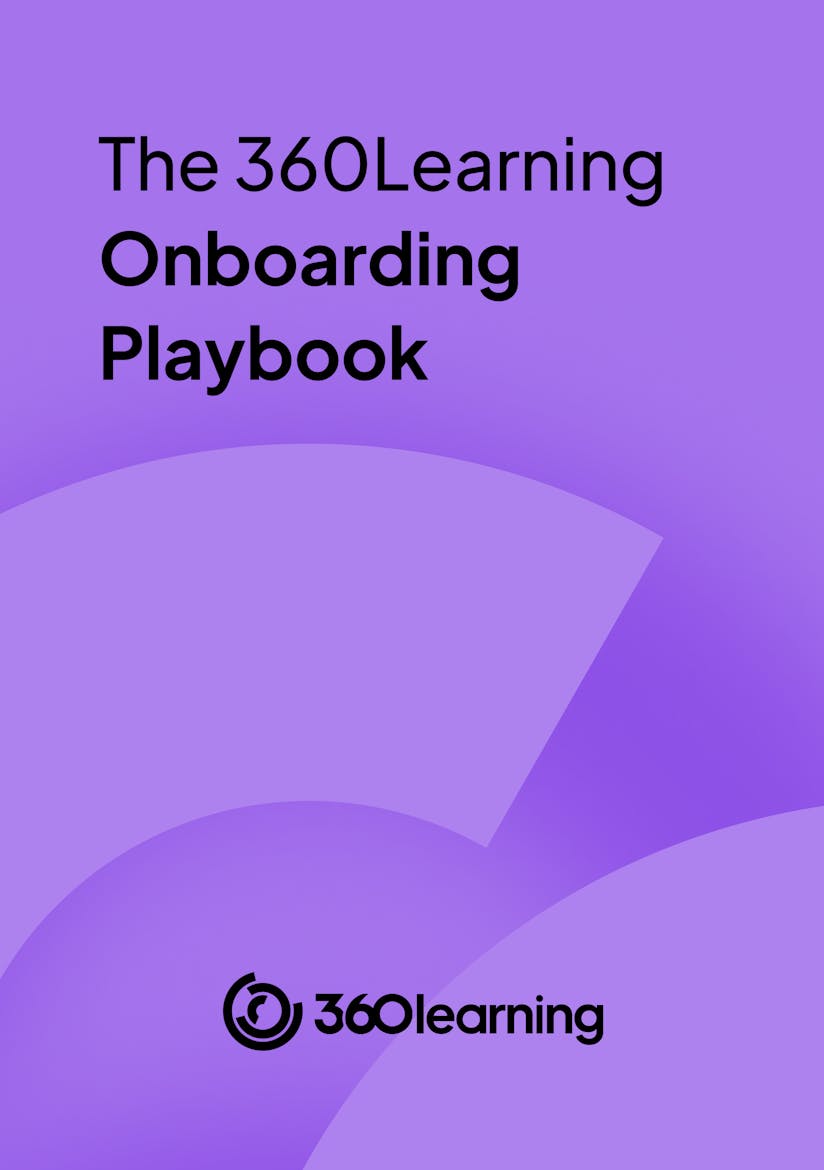
How to Set the Stage for a Successful New Hire Orientation (Plus a Handy Checklist)
Making a bad hire is among the most expensive mistakes an employer can make. Gallup reported in 2019 that replacing an individual employee can cost around 1/2 to 2x the employee’s annual salary. To put this number into perspective, that means replacing an employee with a salary of $50,000 could end up conservatively costing the company anywhere from $25,000 to $100,000.
But, if we had to name a single most important event to the start of a new job—even within onboarding — it'd be new hire orientation. This often takes place on the very first day and is vital for boosting morale from the start of a new hire relationship.
The key to building a great new hire orientation is not only to cover the “basics” but to provide employees a warm welcome. This is because the deeper work of orientation is really about going beyond filling out the necessary paperwork; it’s the first opportunity to integrate a new hire into the fabric of your company.
By developing stellar employee orientation, you set them up for success by giving them the tools they need to thrive, teaching them about your company policy and culture, and ensuring they connect with key colleagues—even if they’ll be working remotely. Here’s everything you need to take into account for a warm, welcoming, and effective new hire orientation. You can also take a deep dive into how to run the entire onboarding process in our playbook, below:

The Onboarding Playbook we swear by
By providing your contact info, you agree to receive communications from 360Learning. You can opt-out at any time. For details, refer to our Privacy Policy.
1. Set up accounts and equipment before orientation
People are jumpy when they start a new job. In fact, a LinkedIn Learning report found that, on day one, about 80% of new hires feel a mix of nerves and anxiety.
Quell their fears by setting them up for a successful first day. Preboarding is all about making sure they have access to essential platforms, a working email, and the equipment they need. This lets them know you’re excited about their arrival and are prepared to facilitate a great introduction to the company.
Most of the heavy lifting in this period tends to fall on the shoulders of HR. One way to streamline this process is to create a centralized list of tasks your new hire needs to work through. This list should include, at a minimum:
- Activating company-specific accounts, like Slack and email
- Sending an organization chart with names and faces
- Providing role-specific information
Also consider developing an FAQ with answers to commonly asked questions, like your company’s dress code, where to park, and anything extra they may need for their first day.
Related: 9 Preboarding Strategies to Keep New Hires Engaged Before Their First Day
Remote orientation tip: check-in about your new hire’s technology needs
A new hire will need the proper tools before they can get started filling out paperwork or learning about company policy. If you’re conducting an orientation online, check in with your new hire to make sure they have access to the technology needed to succeed in their role. Some common tech needs include a computer, a strong internet connection, and software needs (like Adobe or Microsoft Suite) to perform their job remotely.
2. Create a consolidated, organized packet of paperwork for your new hire
A lot of tasks, legally, must be completed during orientation. Pulling all the necessary documents together for your new hire will let them work through it all quickly and with minimal confusion.
One way to go about compiling paperwork is to create a standardized list. This way, you don't have to dig through old documents and make a system from scratch for each new hire. At the very least, keep links to all the right documents in DocuSign, an Asana checklist, or a single email.
Several generally required documents might include the following:
- I9 Employment Eligibility Verification
- W-4 Federal Withholding Form
- Emergency Contact Information
- Banking Information for Direct Deposit
- Information Technology Usage Agreement
- Benefit Enrollment Forms
3. Teach company policy, values, and culture
Employees who understand your company and why it exists are more likely to stay. Gallup found that 71% of millennials who “strongly agree” that they know what their organization stands for and what makes it different from its competitors plan to stay with their company for at least one year. Even more telling, that number dramatically falls to just 30% for millennials who strongly disagree.
Use orientation as a time to share your company’s values, teach policy, and provide a sense of the workplace culture. At 360Learning, our new hires complete a specific course that teaches them about our company culture, called Convexity, on day one.

Convexity is a teamwork system that encourages transparent knowledge-sharing across all levels of staff. By teaching new hires about Convexity culture from the start, we’re giving them the foundation for our Collaborative Learning methodology. Integrating this course into the orientation process instills new hires with 360Learning’s values and teaches productive habits that help them succeed in the long run.
Related: Your Guide to Building a Scalable Employee Onboarding Process in 2022
4. Give new hires a lay of the land with an office tour
Whether your team includes three people or 300, take the time to introduce new hires to their work environment during their orientation. This is how employees learn where to find certain things—like office supplies, emergency exits, or (perhaps most importantly) the bathroom. Plus, it’s a great way to share information about who to go to for certain questions or issues.
Remote orientation tip: create a centralized portal that holds key workplace information
For those who work in a remote setting, it might be tempting to skip the office tour. But that would be a massive disservice to your employees seeking guidance in a new and unfamiliar environment.
Store everything a new hire might need when joining a new environment in one centralized portal, like a wiki or learning management system. Use a democratized approach that encourages all levels of staff to contribute their invaluable institutional knowledge in a space that’s easy to access, even after orientation ends. This space can hold the information that might be shared in an office tour and more, like company handbooks, organization charts, and workplace policies.
5. Introduce new hires to leadership and key colleagues
Everyone’s got a full calendar, but it’s crucial to set aside time for new hires to meet with their teams, direct supervisors, and (if possible) with the leaders of your company.
Harvard Business Review conducted a survey with Microsoft about best practices with new hires to increase retention rates. They found that the single most important thing managers can do during orientation to engage new hires is to schedule a meeting with their supervisor. In fact, meeting one-on-one with their manager within the first week led to employees who were more collaborative, more productive in meetings, and reported a stronger sense of belonging within the first 90 days.
Schedule time to meet with their onboarding cohort
In an ideal world, you want to conduct an orientation with new hires in groups, so they can work through the entire process together. At the very least, assign your new hire to an onboarding buddy to help them navigate the ups and downs of learning a new work environment and to assist them with any questions or challenges that may arise. Onboarding buddies are helpful in boosting confidence.

Remote orientation tip: schedule a 30-minute video meeting to chat with key staff
Say you’re conducting orientation online and aren’t able to meet in person—that's no excuse for skimping out on meeting with key staff, like managers, leadership, and onboarding buddies. Blocking off a brief 30-minute window to introduce new hires to important staff members, including leadership, can make a huge difference in their employee journey.
6. Use your new hire orientation checklist to boost employee retention
Developing an ironclad orientation is a crucial first step to maintaining an engaged, loyal, and highly productive employee base. It does more than simply get paperwork out of the way—it lays the foundation for a long-lasting and successful employee relationship.
Our checklist details every step of your company’s new hire orientation, helping you stay organized and ensuring all new hires have the same welcoming experience. Best of all, it gives them the confidence and knowledge they need to thrive in their new roles, fosters meaningful connections among colleagues, and makes them far more likely to stick around for the long haul.
New Hire Orientation Checklist
Before Orientation
- Email welcome materials (including formal offer, benefits information, any recent articles about the company)
- Email role-specific information
- Share company organization chart
- Inquire about tech or workspace needs (including laptop, keyboard, mouse, and internet coverage)
- Set up workplace email
- Set up essential accounts
- Assign onboarding buddy
- Schedule meetings with direct supervisors, HR, Payroll, key staff, and leadership
Orientation
Administrative
- Essential Paperwork
- Procedural Information
- Workstation set up
- Arrange for QR-code enabled business cards, staff photo, ID badge, desk plaque
Office Tour
- Share where to find essential spaces, like bathrooms, stairwells, and emergency exits
- Point out office kitchen and eating areas
- Show how to find office supplies and order new stationery
- Introduce onboarding team or onboarding buddy
- Introduce direct supervisors
- Introduce leadership
- Point out teams who can help with specific issues (including IT, HR, Security, Office manager)
Remember, even if you’re working remotely, make time for your new hire to meet with key staff members. Schedule brief 30-minute windows throughout the day for informal video chats to help them learn the lay of the (digital) land.
Company Policy and Culture
- Introduce tools and learning platforms
- Introduce company culture online learning courses
- Set up role-specific trainings
- Set up a team lunch
- Complete employee policy manual acknowledgment
- Share employee handbook
- Share local eateries for grabbing lunch

